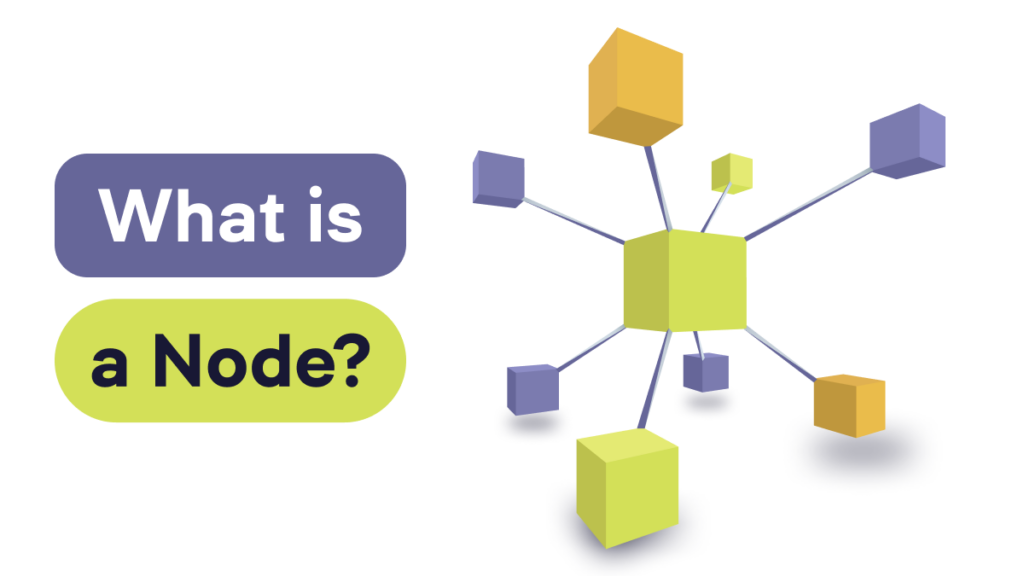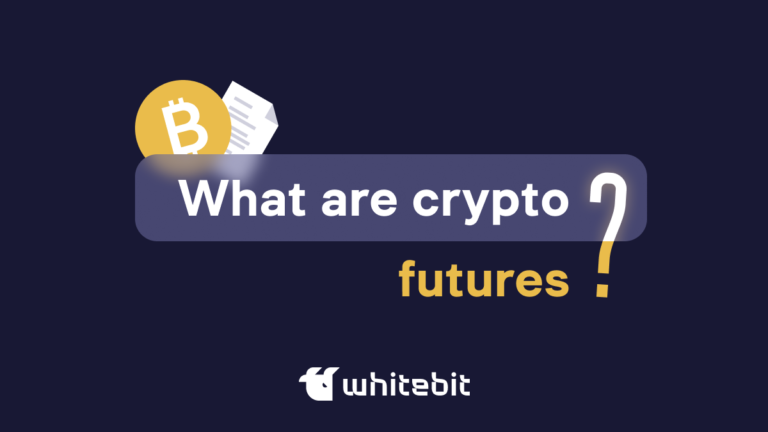What Is the Node in Crypto

Content
Cryptocurrency is the embodied idea of decentralized finance. Satoshi Nakamoto offered an alternative to traditional financial systems by figuring out how to provide verifiable and trustworthy information on the Bitcoin blockchain. But how did he do it? Nodes — crucial, crucial components of the blockchain structure — played a key role. What is the node? What are the different types of nodes? How do you start a node? We will tell you about all this in our article.
A node is any computer that is part of a cryptocurrency blockchain network. In a decentralized network, nodes exchange information about blocks and transactions through P2P protocols. Depending on the type, a node can store either part or all of the blockchain data. The definition of a node comes from the Latin word “nodus,” which means “node.” Therefore, nodes are often referred to as nodes.
Technical Features of Nodes
Nodes’ technical features make them the centerpiece of the blockchain ecosystem. Each crypto node stores a full or partial copy of the blockchain and participates in validating and distributing transactions. They use sophisticated algorithms and cryptographic protocols to ensure data integrity and security, making the blockchain resistant to attack and manipulation.
The main task of nodes is to maintain trustworthy information in the blockchain. The blockchain is a sequence of blocks containing data about all transactions ever executed on the cryptocurrency network. Miners collect transaction information into blocks, which are then added to the blockchain. Each block includes a hash of the previous block. The hash is a unique digital fingerprint of the previous block that links the blocks in the blockchain. If the data in one of the blocks changes, it will disrupt the integrity of the entire chain. To detect such a problem, crypto nodes compare the blockchain data with information from other nodes in the network.
Each node crypto communicates with other nodes through a peer-to-peer network, which allows synchronized data updates on all nodes. Consensus mechanisms, such as Proof-of-Work or Proof-of-Stake, determine the rules and order in which new blocks are added to the chain.
Functions of Network Node
Nodes in the blockchain provide storage and verification of transactions, interacting with each other to disseminate up-to-date information. The main functions of nodes include:
- Data storage: Full nodes store a complete copy of the blockchain, ensuring that data is immutable and available. Lightweight nodes store only a portion of the data needed to validate current transactions, reducing resource requirements.
- Transaction validation: Nodes authenticate transactions by ensuring they conform to the network’s rules. This includes verifying digital signatures and whether sufficient funds are in the senders’ accounts. Hashing creates a TxID (TxID is a unique transaction identifier) that remains unchanged.
- Synchronization: Nodes transmit information about new blocks and transactions through P2P protocols, ensuring fast and efficient data transfer. This helps maintain the synchronization and integrity of the blockchain and makes the network more resilient to attacks and disruptions.
- Consensus support: Nodes such as PoW or PoS build consensus by determining valid blocks and transactions. They prevent double-spending and ensure that each transaction is included in the blockchain only once.
How Do Nodes Protect the Blockchain?
Nodes play a crucial role in protecting the blockchain by making it decentralized and resistant to attack. In a decentralized network, data and processes are distributed across many nodes, making it resistant to hacking. For a successful attack, an attacker must control many nodes, which is practically impossible and expensive. Nodes validate transactions against consensus rules, preventing double-spending, and protect the blockchain from “51%” attacks, in which attackers attempt to gain control of more than half of the network’s processing power. The decentralized structure and many nodes make such attacks virtually impossible for large networks. Nodes crypto also ensures data integrity by synchronizing their copies of the blockchain, allowing any discrepancies to be quickly detected and corrected.
How do nodes differ from centralized systems?
In centralized systems, data and control are concentrated in one or more centralized nodes, making them vulnerable to attack and failure. If a centralized node fails, the entire system can stop functioning. In blockchain, nodes are distributed worldwide, each storing a copy of the data and participating in transaction validation, making the network more resilient and secure.
Concentration of bitcoin nodes on the world map. Source: bitnodes.io
Types of nodes
Full Nodes
Created for Bitcoin, full nodes serve as the foundation of the blockchain and are involved in transaction validation. Bitcoin nodes are connected to the network around the clock. They are fully synchronized and store a complete copy of the entire blockchain, including every transaction that has ever taken place. The more full nodes, the more secure the cryptocurrency network is. Increasing the number of such nodes makes it more challenging to distort information and falsify transactions.
Light Nodes
Light nodes in cryptocurrency are software that connect to a full node to get information about account balances and transactions. It uses the full bitcoin node as a gateway to the blockchain, having the necessary functionality to use cryptocurrency without a lot of computing power. The lightweight node blockchain can even be run on a mobile device, and synchronization takes only a few seconds.
Pruned Full Nodes
Pruned full nodes are full nodes that store only a portion of the blockchain history. These nodes first load and verify the entire blockchain like a regular full node, but then delete old blocks, keeping only the latest data needed to keep the information up to date and verify new transactions. This dramatically reduces the memory requirements needed to run a node while continuing to ensure the security and integrity of the network.
Master Nodes
Masternodes are specialized nodes in some blockchain networks that perform additional functions such as instant transactions (Instant Send), enhanced anonymity (Private Send), and participation in network management. Running a master node computing requires a significant pledge in the network’s cryptocurrency, confirming an interest in its stability and security. As a reward for performing these functions, master nodes receive a portion of block rewards. Examples of networks with master nodes include Dash and PIVX.
Mining nodes
Mining is the process of mining cryptocurrency by calculating complex mathematical problems. This is precisely what mining nodes do. They participate in creating new blocks and adding them to the blockchain, confirming the transactions necessary to form new blocks. Unlike regular bitcoin nodes, the owners of mining nodes are rewarded for their work.
There is cloud mining for those who don’t want to or need help managing their equipment. This alternative involves users renting computing power from specialized providers, allowing them to participate in mining without owning and managing their mining blockchain nodes.
Staking nodes
Staking nodes are Proof-of-Stake (PoS) based and do not require significant computing power. Instead, they use pledged cryptocurrency assets to select block validators. Staking nodes validate transactions, create new blocks, secure the node network, and participate in governance by voting on protocol changes. PoS networks are more energy efficient and resistant to attacks than Proof-of-Work (PoW) based networks.
Lightning Notes
The Lightning Network (LN) is a second-layer add-on to the Bitcoin blockchain, which is a network of custom payment channels. Lightning notes operating in this system synchronize with each other and the main blockchain, checking only those transactions that are directly related to them, which increases the processing speed.
The main functions of Lightning notes are:
- Opening channels with other nodes and depositing funds in multi-signature addresses.
- Transferring payments through other nodes.
- Write the final balances for the main blockchain.
- Fast and low-cost transactions outside the main blockchain.
Lightning nodes improve the scalability and efficiency of cryptocurrency networks by enabling transactions without overloading the main blockchain.
Validators and Oracles
Validators are computer nodes in blockchain networks that verify and validate transactions and blocks. In networks with the Proof-of-Stake (PoS) algorithm, validators are chosen based on the proportion of their cryptocurrency assets (steak). They validate transactions, combine them into blocks, and add them to the blockchain, being rewarded with new coins and commissions.
Oracles are systems that provide external data to blockchain networks for intelligent contracts. They collect information from various sources and feed it into the blockchain, enabling the execution of smart contracts based on external events. Decentralized oracles like Chainlink use multiple independent sources to improve data reliability.
Authority Nodes
Authority Nodes are nodes in blockchain networks operating on the Proof-of-Authority (PoA) consensus algorithm. They have special rights and responsibilities, such as validating transactions and creating new blocks. In PoA networks, trusted nodes are managed by well-known and verified organizations or individuals, ensuring high performance and fast transaction confirmations. However, this approach reduces the level of decentralization and makes the network more susceptible to external influences.
The cryptocurrency market influences the interest in launching and operating nodes. When cryptocurrency prices are high, mining nodes become more profitable since the reward for creating new blocks increases. This incentivizes more participants to set up and manage nodes. Staking nodes also become more attractive because the income from staking is directly tied to the current cryptocurrency price. The capitalization of cryptocurrencies also affects the economic appeal of launching and operating nodes. High market capitalization makes mining and staking nodes more profitable, attracting more participants to the network.
How to Set Up a Node
To set up a blockchain node, you need a stable internet connection. Launching a node in a blockchain network can vary depending on the specific cryptocurrency and node type. Below is a general process for setting up a full node:
- Choose Hardware and Operating System: Ensure you have at least 2 GB of RAM and 200 GB of free disk space. A computer with the latest Windows, Linux, or macOS version is typically sufficient.
- Downloading and Installing Software: Use the official cryptocurrency website to download the official node software. For example, for Bitcoin, it’s Bitcoin Core; for Ethereum, it’s Geth or Parity.
- Synchronizing the Blockchain: Launch the software and start synchronizing with the blockchain after installing it. This process can take significant time, as the node needs to download and verify the entire transaction history.
- Configuration: Configure the cryptocurrency node’s configuration file depending on your goals and network requirements. Ensure the necessary ports in your firewall and router are open. For example, the standard port for Bitcoin is 8333, and for Ethereum, it’s 30303.
Forks and Node Function Changes
Forks are updates or changes to the blockchain protocol that can alter the functions and behavior of nodes. There are two types of forks: hard fork and soft fork.
- Hard forks introduce significant changes that can split the network into two independent chains, requiring users to update their software to work with the new network. This type of fork typically involves significant protocol changes that are not backward compatible.
- Soft forks introduce changes compatible with previous versions, allowing the network to be updated gradually without splitting. They also make minor backward-compatible adjustments so nodes running the old software can still operate under the new rules.
For nodes, forks mean updating their software and resynchronizing with the network to continue functioning correctly and support the new rules and features. What is a node in networking? Forks enable blockchain networks to evolve and implement improvements but require coordination between developers and users to ensure a smooth transition.
How to Earn from Nodes
Earnings from nodes depend on their type and the blockchain network. Full node owners earn transaction fees, staking nodes in PoS networks earn interest from staked assets, master nodes offer regular payments for performing particular functions, and mining nodes in PoW networks receive rewards for solving mathematical problems. Net profit depends on equipment, electricity, and node maintenance costs.
Conclusion
This article explored what is the nodes in cryptocurrency and why they are essential. To summarize, nodes in crypto are critical elements of blockchain networks, ensuring their decentralization, security, and functionality. Depending on the node type, they can perform transaction validation, block creation, payment channel management, and network governance participation. Node owners can earn from transaction fees and block rewards, but it is important to consider costs for equipment and electricity. Nodes play a crucial role in maintaining the resilience and efficiency of blockchain networks, making them reliable and scalable.
FAQ
Node in computer network is any computer or server connected to a blockchain network.
Meaning of node to decentralization is distributing data and transaction validation among numerous independent nodes. This eliminates reliance on a central node, making the network resilient to attacks and failures.
Nodes are necessary for validating and transmitting transactions, storing blockchain data, maintaining the security and decentralization of the network, and ensuring the integrity and proper functioning of the blockchain.









